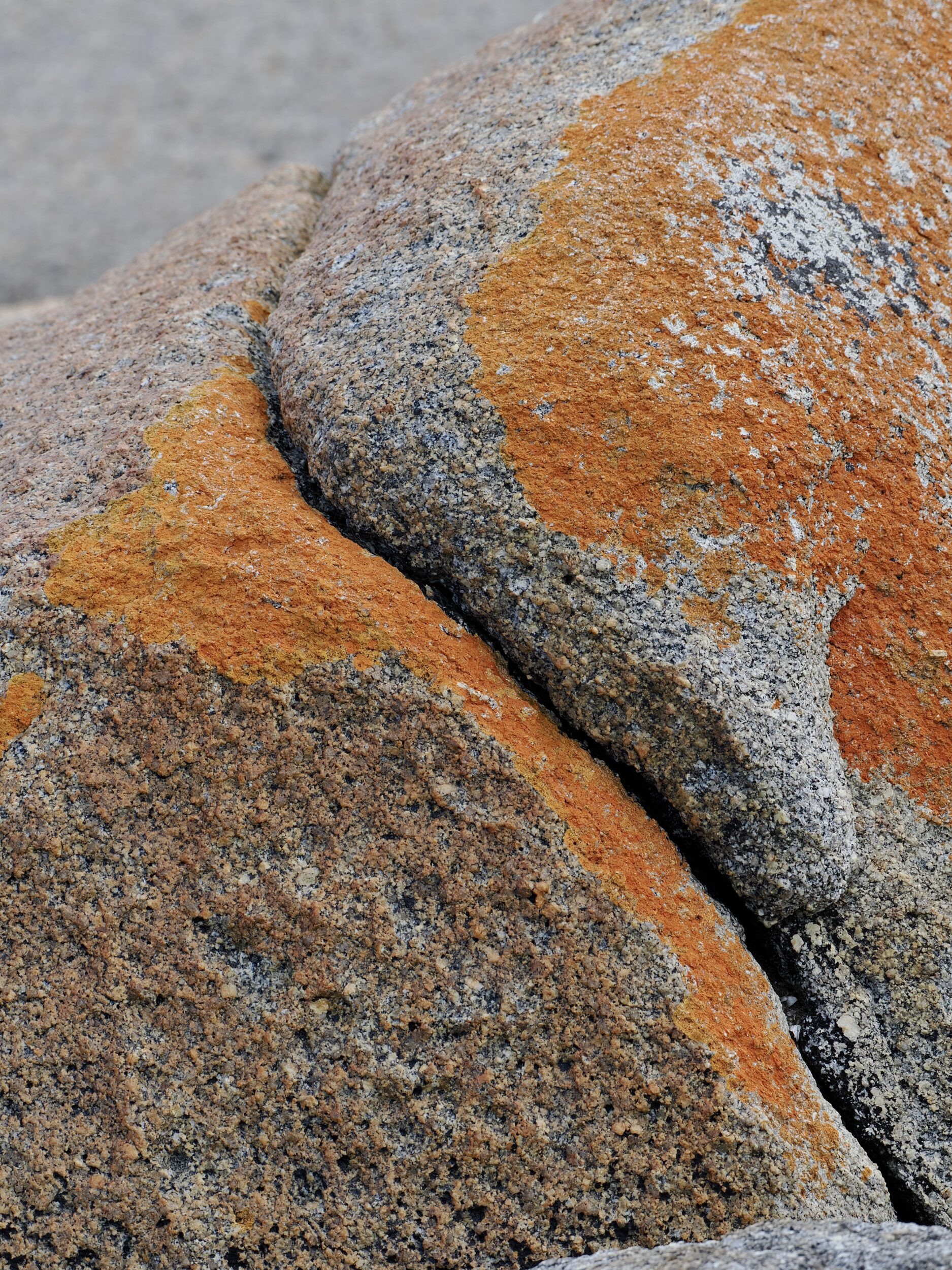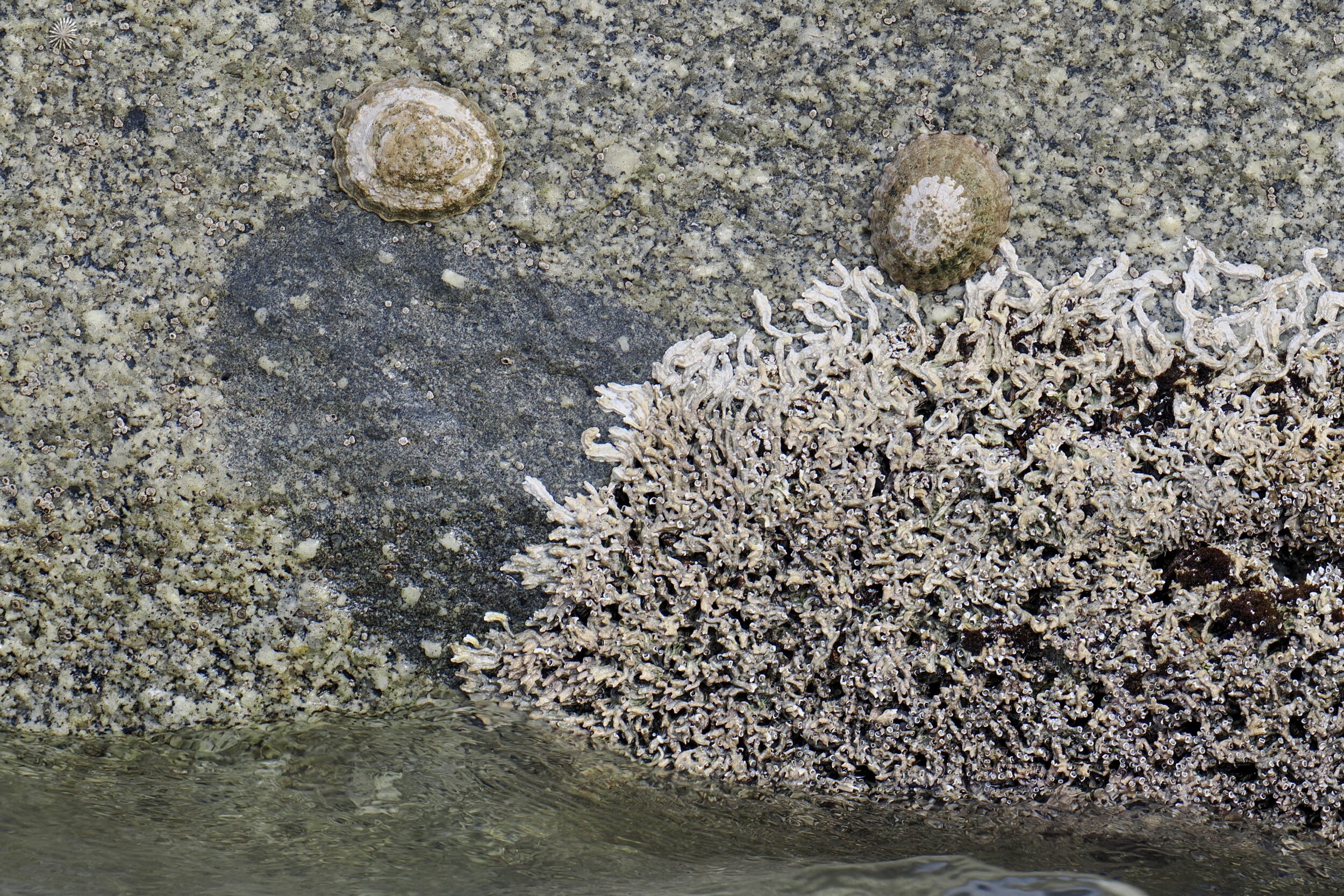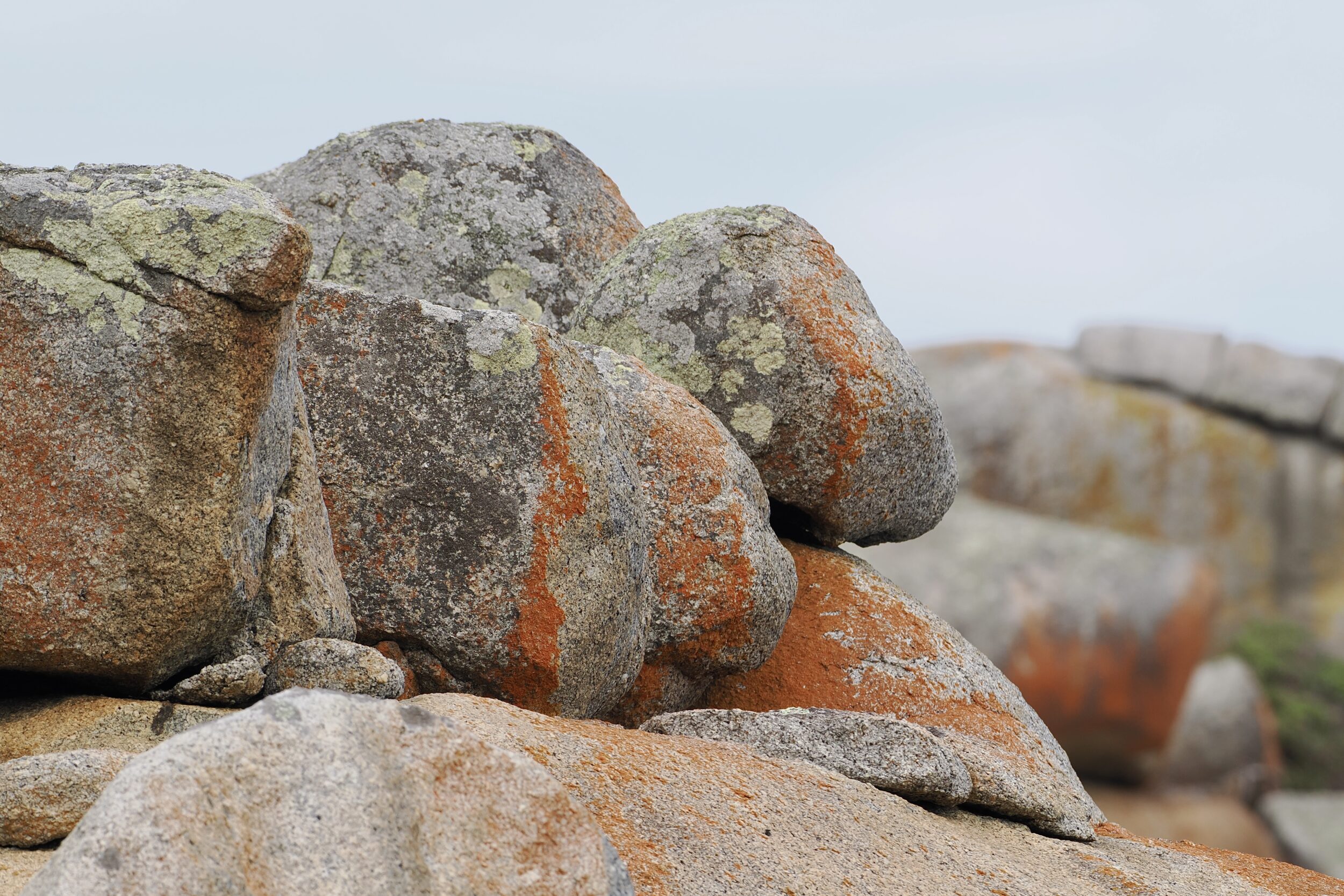Australia is remarkably rich in exposed rock, including some of “our” planet’s loveliest and longest-exposed rock.
Even by Australian standards, Flinders Island is particularly well-endowed.
Its “rock stars” are often gloriously “decorated” by the wondrous-strange organisms that live on them.
Flinders’ unpolluted air and its abundance of exposed granite make the island a paradise for lichens. (and for those who like lichens)
For millenia, lichens have been much-misunderstood by humans, and/or much-ignored.
Just exactly what a lichen is, how we should categorise lichens, and how we should regard them are still rather “open” questions.
One certainty: no lichen is a single organism.
Another certainty: lichens are definitely not plants.
The opening paragraph of Wikipedia’s good entry on lichens:
A lichen (/ˈlaɪkən/ LIE-kən, UK also /ˈlɪtʃən/LI-chən) is a hybrid colony of algae or cyanobacteria living symbiotically among filaments of multiple fungus species, along with yeasts and bacteria[1][2] embedded in the cortex or “skin”, in a mutualisticrelationship.[3][4][5][6][7] Lichens are the lifeform that first brought the term symbiosis (as Symbiotismus[8]) into biological context.
Click here for an interesting essay which argues that we should perceive lichens as ecosystems, and “free the lichen from species-scale thinking”.

Of course, some of the life forms that thrive on some of Flinders Island’s rocks are individual animals – neither plants, nor algae, nor fungi, nor microbes…nor symbiotic associations/ecoystems thereof:


Comments